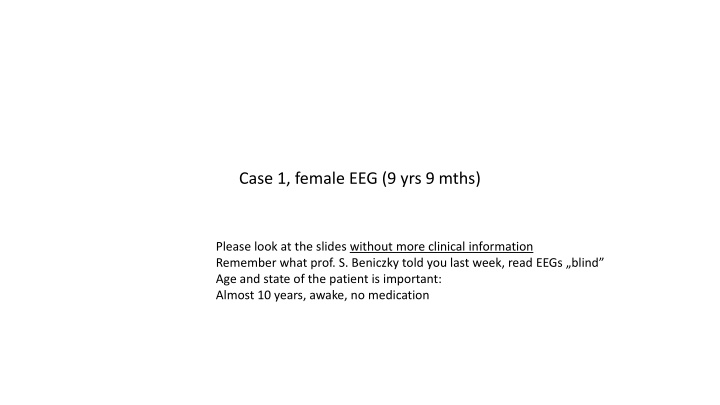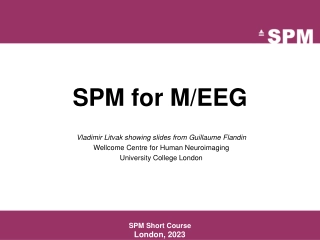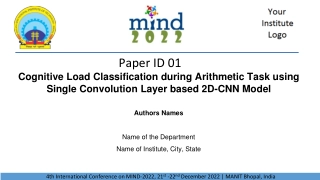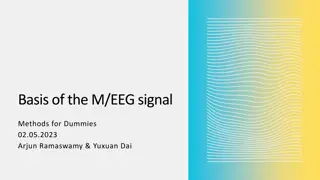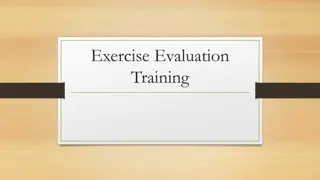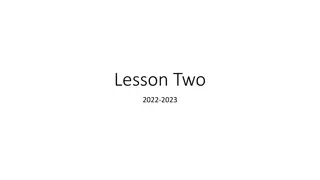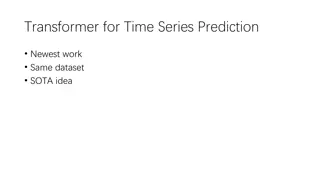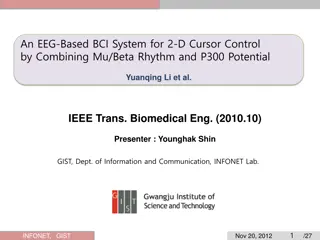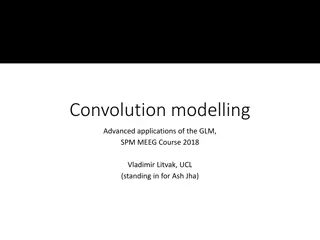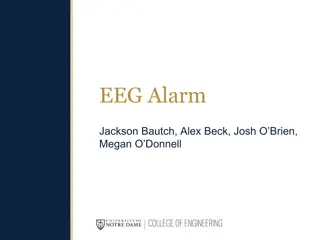EEG Evaluation for 9-Year-Old Female Patient
EEG slides of a 9-year-old female patient in an awake state with eyes closed and no medication reveal various segments in monopolar and bipolar montages. The EEG changes are compared between different montages, including segments with notable alterations. Changes in brain activity are observed during different states and eye movements, providing valuable insights for clinical assessment.
Download Presentation

Please find below an Image/Link to download the presentation.
The content on the website is provided AS IS for your information and personal use only. It may not be sold, licensed, or shared on other websites without obtaining consent from the author.If you encounter any issues during the download, it is possible that the publisher has removed the file from their server.
You are allowed to download the files provided on this website for personal or commercial use, subject to the condition that they are used lawfully. All files are the property of their respective owners.
The content on the website is provided AS IS for your information and personal use only. It may not be sold, licensed, or shared on other websites without obtaining consent from the author.
E N D
Presentation Transcript
Case 1, female EEG (9 yrs 9 mths) Please look at the slides without more clinical information Remember what prof. S. Beniczky told you last week, read EEGs blind Age and state of the patient is important: Almost 10 years, awake, no medication
Case 1, segment 1, awake, eyes closed, monopolar and bipolar montage of the same EEG segment
Case 1, segment 2 in bipolar montage, eyes closed (EC); in the upper part you can see where in the EEG the slide is taken
Case 1, segment 4b, same as on previous slide, now bipolar montage, eyes closed
Next page, segment 4c in monopolar montage; ComAvg + Low Row
Eyes opening Same segment in bipolar and monopolar montage for comparison
A lower paper speed The whole discharge
Patient 1, discharge during hyperventilation (1)
Patient 1, discharge during hyperventilation (1), 500 V/cm; bipolar montage
Patient 1, discharge during hyperventilation (2nd episode), 500 V/cm; bipolar montage
What is your diagnosis just from the data you have so far? Diferential diagnosis?
Intermittent photic stimulation; flash frequency 8 Hz, monopolar montage (ComAvg with LowRow)
Intermittent photic stimulation; flash frequency 8 Hz, bipolar montage + LowRow (same as on the previous slide)
Intermittent photic stimulation; flash frequency 8 Hz, monopolar montage (ComAvg with LowRow) Lower paper speed , black bar = eyes closure
Intermittent photic stimulation; flash frequency 18 Hz, monopolar montage (ComAvg)
Intermittent photic stimulation; flash frequency 20Hz, monopolar montage (ComAvg)
What are your suggestions for the diagnosis? Do you need more data?
